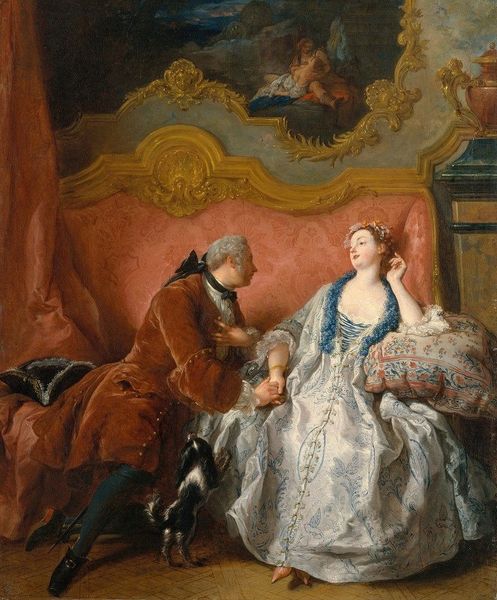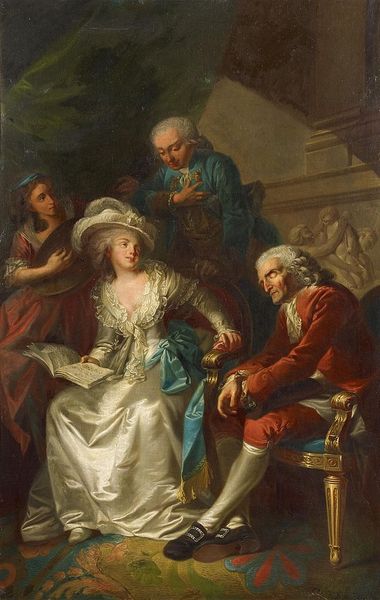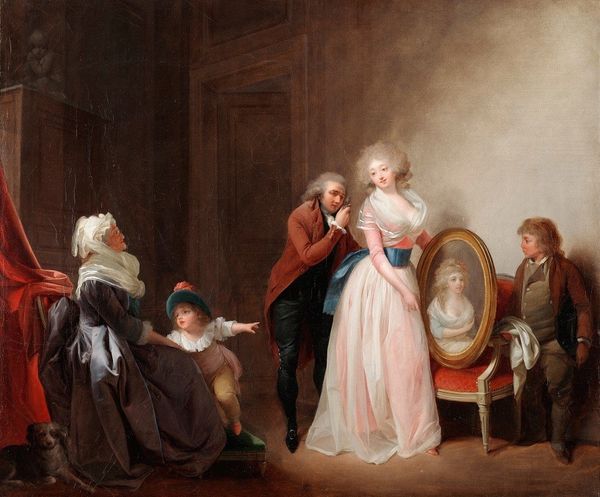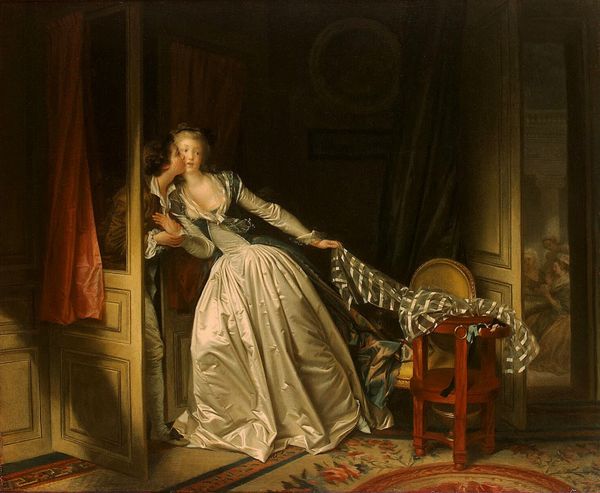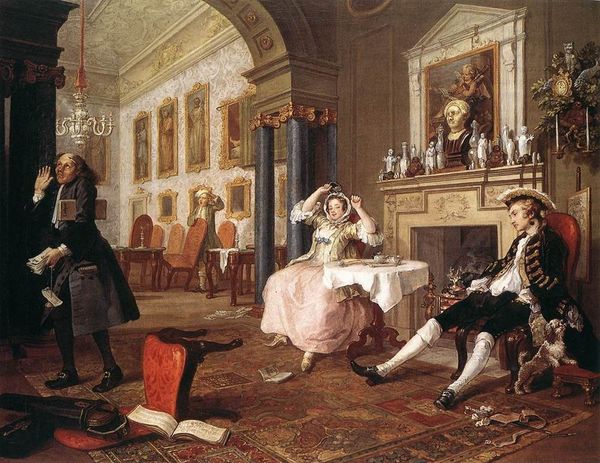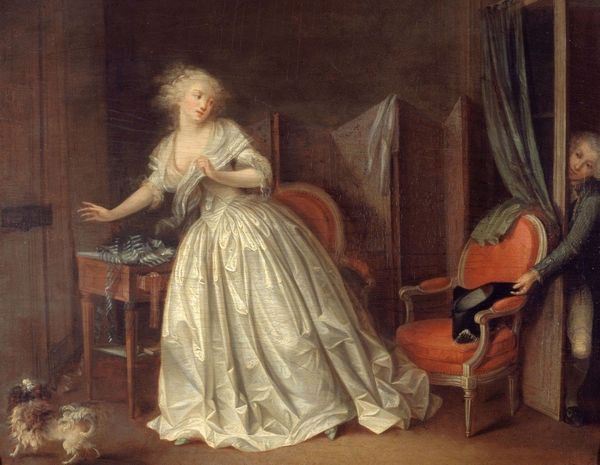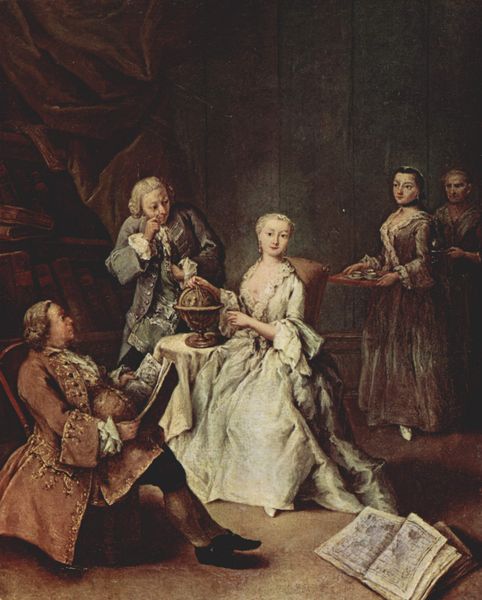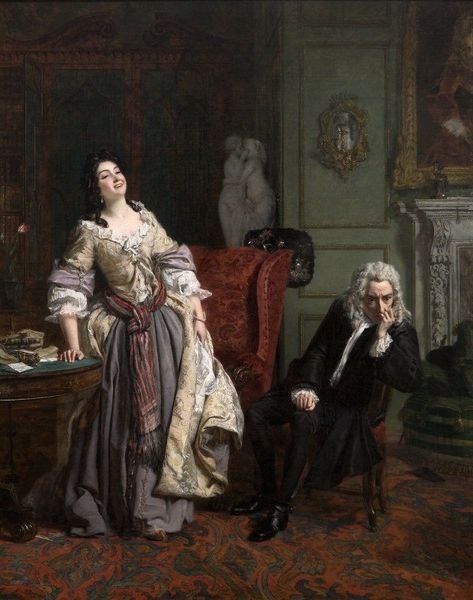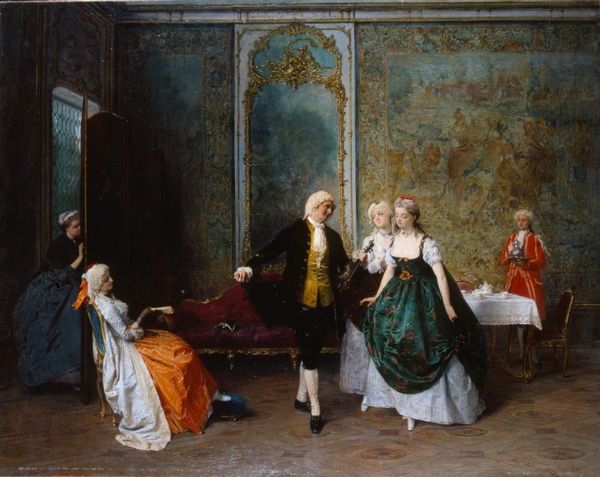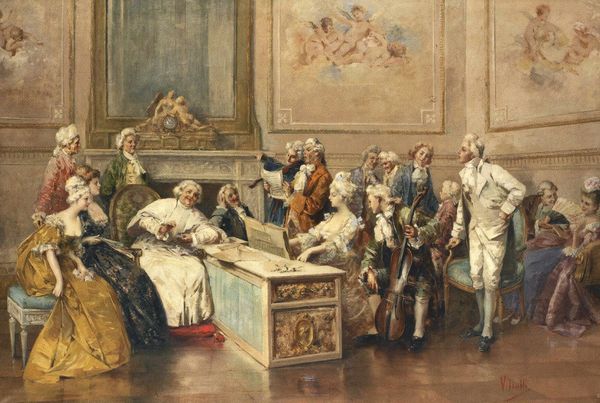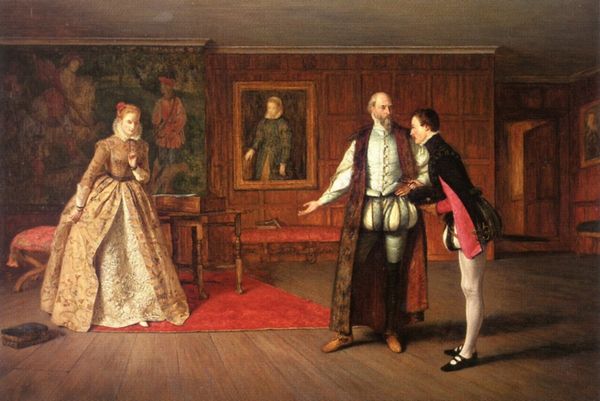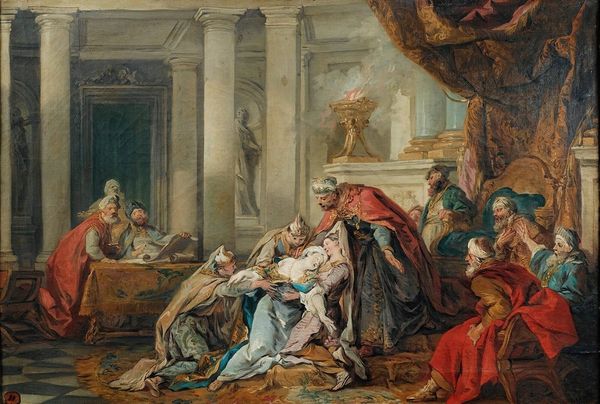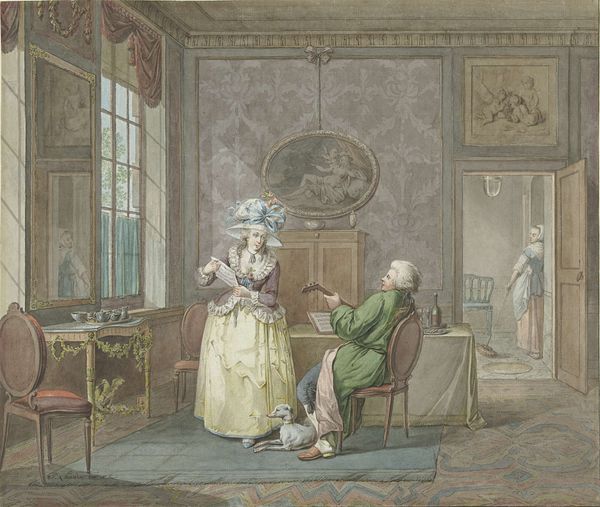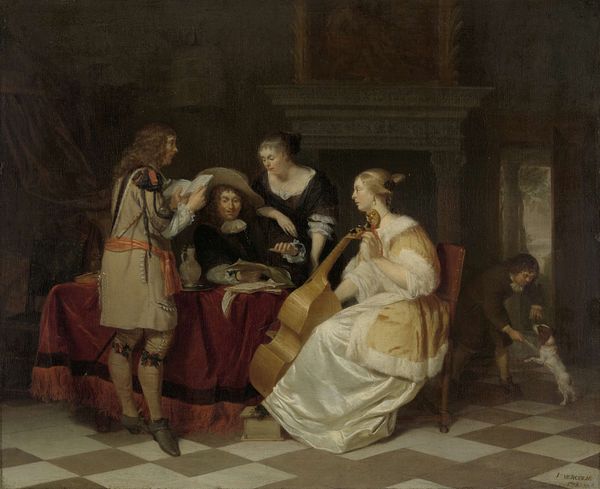
oil-paint
#
conversation-piece
#
portrait
#
gouache
#
oil-paint
#
oil painting
#
genre-painting
#
portrait art
#
rococo
Copyright: Public Domain: Artvee
Curator: "The Garter," painted in 1724 by Jean-François de Troy, captures a very intimate moment rendered in oil. Editor: Intimate, and rather uncomfortable. I feel a tension emanating from the canvas—a mix of surprise, perhaps even indignation, contrasted against what seems like…entreaty? Curator: The scene definitely bristles with symbolic import. The garter itself, discovered mid-slip, acts as an emblem of disarray and fleeting propriety. Garters often appear in art as symbols of love and commitment, although frequently of the more salacious variety. Editor: Right, and to consider that within its socio-historical moment: this isn't just a lost garter; it speaks to the societal constraints placed upon women, the performance of femininity, the ever-present threat of reputation hanging by a thread, quite literally. Curator: Observe also how de Troy frames the subjects: they’re within the gilded trappings of aristocracy but contained nonetheless. Consider that elaborate clock piece—a golden idol representing time's inescapable march and, in this context, perhaps lost innocence. Editor: Absolutely, the decor acts as a stage—a meticulously constructed prison. What interests me is how the female subject confronts us directly, implicating us in this…unveiling. Is she a victim, a participant, or something more subversive? Curator: And what of the gentleman’s gesture, seemingly trying to placate or control? His hand hovers between apology and possession, reflecting the ambiguity inherent in relationships of power. We must recognize too, the period’s ideals of male dominance. Editor: True. We read it differently now, informed by feminist perspectives that reveal the power dynamics at play. De Troy provides not just a snapshot, but a stage for questioning agency, and desire and the cost of social decorum, for the individual and particularly women. Curator: An interesting dichotomy to behold. I am ever moved by de Troy’s command of pictorial metaphor to capture the zeitgeist of early 18th century social interplay. Editor: Indeed, a single discarded garter provides an abundance of social commentary—a testament to art's enduring power to ignite dialogues about ourselves, our past, and the continuing push for liberation.
Comments
No comments
Be the first to comment and join the conversation on the ultimate creative platform.
